Adelaide airport demonstration project
Demonstration of using irrigation to cool airports
Contact
About the project
This project has the potential to demonstrate that recycled water and stormwater can be used by airports to create zones of cooler air that generate economic savings for aircraft operations, protect travellers and airport workers from extreme temperatures, cools surrounding suburbs and support growth of useful crops (rather than simply turf).
Project aim
- Irrigated green space is much cooler than unirrigated green space (and paved areas) and can have a cooling effect beyond the area of irrigation.
- The cooling benefits of irrigated green space extends beyond human health and thermal comfort to also improve the operations of important urban infrastructure, such as airports.
- Irrigated green space at airports can reduce surface and air temperatures at a local scale which can benefit airport users and operations in a number of ways including improving aeroplane fuel efficiency.
The method
Project progress (at the time indicated)
- SA Water and Adelaide Airport began a 2-year trial, irrigating 4 hectares of the airport land with stormwater that has been captured and stored using the adjacent aquifer storage and recovery (ASR) scheme. Measurements have been taken by approximately 40 data loggers both within and outside of the irrigated area to understand the local cooling effects and the extent of the cooling effects.
- Workshop undertaken between the CRCWSC, SA Water and Adelaide Airport to develop scope for demonstration project
- Business case developed by SA Water and Adelaide Airport using data gathered to-date
- Monitoring of wildlife activity associated with irrigation trial
- To strengthen the data that has been collected to-date by SA Water and Adelaide Airport, the following equipment was set up by the CRCWSC to take additional measurements:
- 7 additional hobo data loggers to add to, and calibrate the current temperature and humidity measurements
- 2 sophisticated weather stations to monitor thermal comfort
- 1 EDDY covariance system which allows measurement of evaporative and sensible heat fluxes (this was moved between the irrigated and non-irrigated zones over the monitoring period)
- This equipment was set up to take measurements over summer and will remain in place until Mar/Apr 2018
- It was hoped that a drone could be used to take vertical and horizontal atmospheric measurements as well as surface temperature measurements to allow for understanding of cooling benefits above and alongside irrigated zone, however Civil Aviation Safety Authority (CASA) approval was not obtained in time.
- CRCWSC visited the site in March to check the equipment and download the data collected to-date. The EDDY covariance system was also moved from the unirrigated area into the irrigated area.
- A warm and dry late summer / early autumn has resulted in great conditions for monitoring.
- Initial review of the data collected to-date shows the equipment has worked well and the results are looking positive.
- Monash equipment was removed in May followed by data review, analysis and modelling as part of a PhD project. SA Water equipment will also stop taking measurements until next summer.
- Approval for the use of the drone was not provided this summer but it is hoped that this will happen next summer, pending Civil Aviation Safety Authority (CASA) approval.
- Unfortunately there was a serious failure of the irrigation equipment at Adelaide Airport during summer 2018/2019, so further data collection and drone observations were not possible.
- Using the data collected in the 2018 summer, all extreme hot days (maximum air temperature over 35oC) were selected and assessed in detail to understand the temperature differential between the irrigated and non-irrigated areas.
- Air temperature and relative humidity were investigated at 3 points: 1. 100m upwind from irrigation area, 100m downwind from irrigation area and middle of the irrigation area.
- The whole airfield (7.5km2) was them modelled by the CRCWSC using TARGET (The Air-temperature Response to Green-infrastructure Evaluation Tool) to simulate the potential cooling performance if the entire grassed buffer area was irrigated.
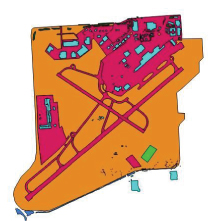
Landuse map of Adelaide Airport
Initial results from the work undertaken to-date by SA Water and Adelaide Airport show that:
- Irrigation results in a surface temperature reduction
- Lucerne provides more value than grass as an irrigated groundcover
- There has been no change in bird abundance or behavior due to irrigation or use of Lucerne
Additional air temperature and relative humidity data collected in the summer of 2018 showed that:
- There is a substantial different in air temperature across the site.
- Between 2pm and 3pm on the 8th Feb, it was 2.7oC cooler in the middle of the irrigation area compared to 100m upwind of the irrigation area.
- In the middle of the day, the temperature was lower and the relative humidity higher in the middle of the irrigation area when compared to the non-irrigated areas.
- The cooling efficiency of the irrigation is greater downwind than upwind and the cooling benefit reduces as the distance from the irrigation increases.
&nsbp;
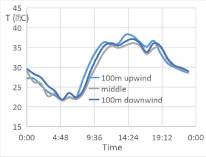
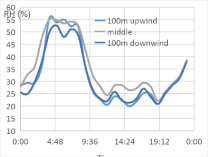
Temperature and Relative Humidity of three points on 8th Feb, 2018
TARGET modelling of the entire airport demonstrated that if the entire airport buffer was irrigated:
- The runway area could be ~1.3oC cooler
- The air temperature of the airport precinct could decrease by ~2oC, and
- The irrigated area itself would be ~2.5oC cooler than if it was not irrigated.
It should be noted that these results were during a time when irrigation volumes were reduced due to land preparation for additional Lucerne planting.
These results were based on model outputs for between 2pm and 3pm on the 8th Feb.

Before
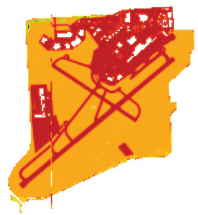 After |
Project stats
Location
Adelaide, South Australia
Status
In progress
Research project
D1.4 – Learning through demonstration and integration
Learning and Evaluation Framework outcomes
| CRCWSC evaluation questions | Response |
|
This project will help to demonstrate through the application of research that irrigated green spaces can reduce surface and air temperatures and provide multiple benefits, including the operation of urban infrastructure such as airports. It will demonstrate this through interdisciplinary research between the CRCWSC and industry stakeholders (SA Water and Adelaide Airport). |
|
There is a close working relationship between the industry stakeholders and the CRCWSC on this project which ensures that the interdisciplinary research which is undertaken on this project is transparent and well communicated between the parties. |
|
SA Water and Adelaide Airport:
CRCWSC / Monash:
|
|
Everything has gone as planned except:
|
|
Potential for weather balloons to be used instead of a drone, but this will not be able to gather as much data and would also require CASA approval. |
| CRCWSC evaluation questions | Response |
|
Monitoring: Strengthen the data that has been collected to-date to include more sophisticated weather stations (monitor thermal comfort) and EDDY covariance system (allows measurement of evaporative and sensible heat fluxes) as well as the air temperature and humidity data currently collected using weather loggers. This equipment has been set up and will stay in place until Mar/Apr. Would also like to be able to include vertical and horizontal atmospheric measurements as well as the surface measurements by using a drone to allow for understanding of cooling benefits above and alongside irrigated zone. This has not been possible yet due to CASA approval requirements but the Adelaide Airport team are trying to facilitate this approval and are confident this should be able to happen. Modelling: Strengthen extrapolation of monitored data to the whole airport and update current business case to be based on evidence rather than assumptions. |
|
The addition of the more sophisticated and calibrated equipment will help to strengthen the data and business case that has been developed by SA Water and Adelaide Airport. Inception meeting allowed for confirmation of project objectives and progress. A follow up meeting in April identified that the project is progressing and the monitoring has gone to plan. A follow-up meeting will be held in May/June to understand the equipment take-down process and data collected to-date. Any CRCWSC communications are provided to projects stakeholders in a draft form for comment and review before publication to ensure accuracy. |
|
Information about the demonstration project will hopefully be available on the CRCWSC website and will be sent to participants via the CRCWSC newsletter |
|
All project stakeholders are happy with the current project progress and the data collected to-date appears to be of good quality and supports the project aims. |
|
Working on airport land has required time and process to gain CASA approvals which is delaying the use of the drones to take additional measurements. However, it is hoped that this approval will be provided to allow these measurements to be taken next summer instead. |
| CRCWSC evaluation questions | Response |
|
Expenditure has been tracked and is looking within budget. May require some additional funding to allow for the drone measurements to be taken during the next summer. |
|
| CRCWSC evaluation questions | Response |
|
Too early to understand this yet for the demonstration project. The modelling work will be used to strengthen the business case for further expansion of the trial. It should be noted that the work undertaken to-date by SA Water and the Adelaide Airport has started to generate considerable interest in the use of irrigation to cool airport lands (and other areas). It appears that the TEDx talk has been instrumental in generating this interest as it is in a readily accessible format for a broad audience. Examples of the impact the Adelaide Airport Irrigation Trial is having already includes:
Invitations for SA to be part of TV shows (including kids science show and one focused on use of irrigation to cool residential areas) |
|
None to-date |
|
It is intended that the outcomes of this project will assist Adelaide Airport and potentially other airports to make informed decisions about the irrigation of their land to improve airport operations. The work undertaken to-date by SA Water and the Adelaide is already being used to help justify the expansion of the trial into other key areas across the airport in 2018/19. |
“By changing air density, higher temperatures – especially above specific thresholds – dramatically reduce aircraft performance: the mechanics of flights become less efficient, take-off and landing consumes more fuel, and components like tyres and turbines incur more wear-and-tear”, Professor Tapper explained. “Under those conditions, aeroplanes use more fuel, carry fewer passengers and less freight – yet even a 1–2°C reduction in temperatures could produce large economic benefits.”
Links to related work
- Irrigating Adelaide’s Airport for a heat reduction trial
- Cool airports: innovation for a warming world | Greg Ingleton | TEDxAdelaide
- The cooling effect of irrigation on urban microclimate during heatwave conditions
- Watering our cities: the capacity for water sensitive urban design to support urban cooling and improve human thermal comfort in the Australian context
- Impacts of water sensitive urban design solutions on human thermal comfort
- Airport crop lowers runway temperatures
Who might this interest?
The outcomes of the work already undertaken by SA Water and the Adelaide Airport is already generating interest in other airports and countries.
Interested stakeholders may include:
- Airport stakeholders
- Urban planners
- Councils
- Green space managers
- Developers
- Landscape architects
- Water utilities
- Water engineers
Interested in this solution?
We partner with small and large companies, government and industry in Australia and around the world.
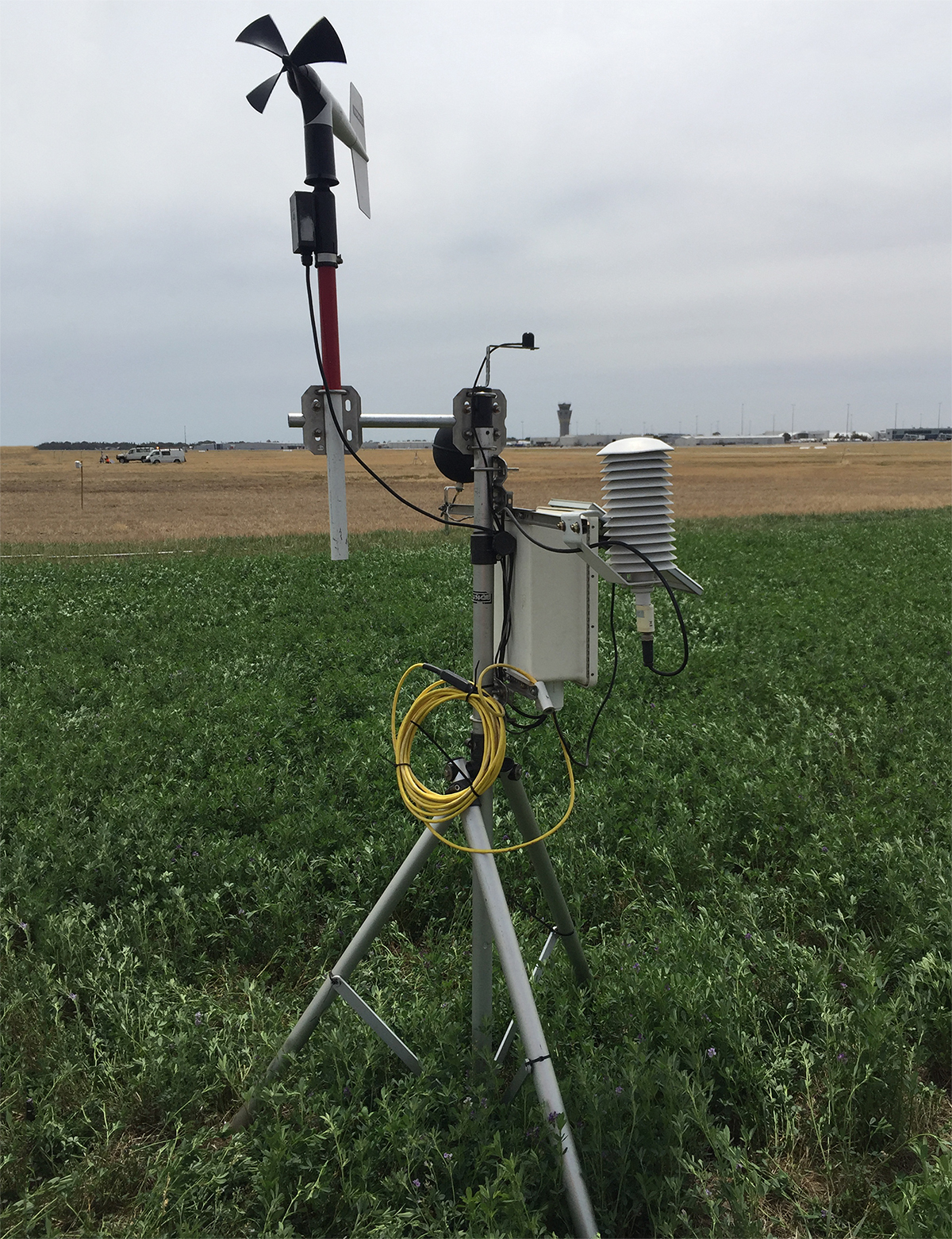
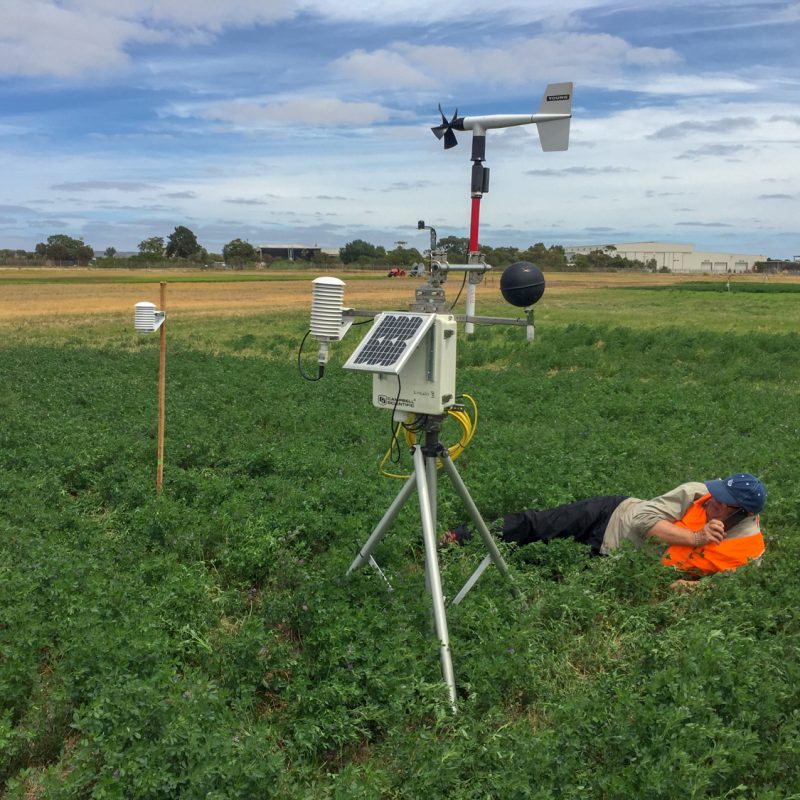
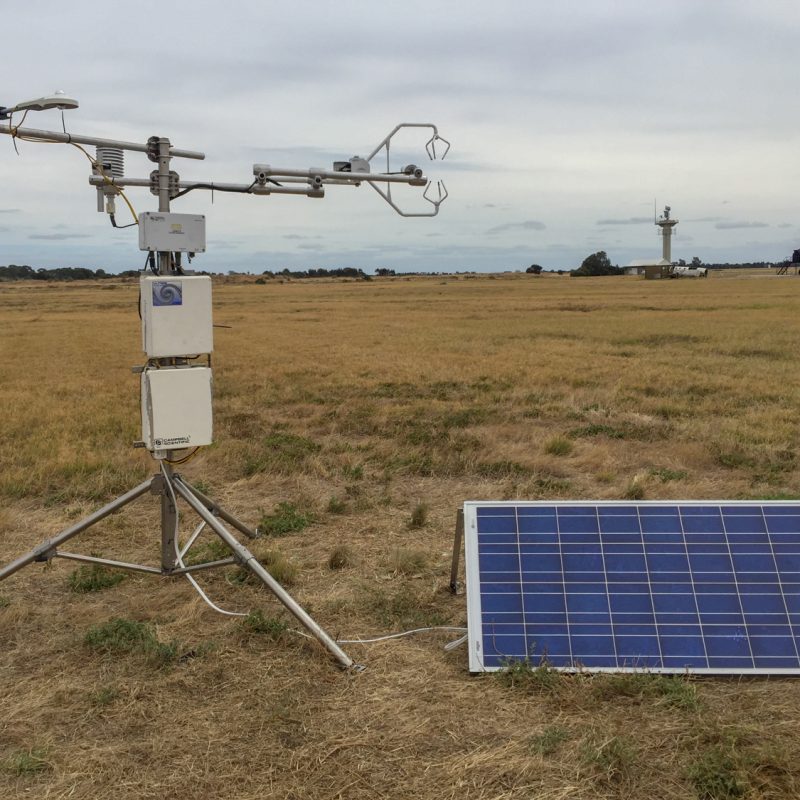
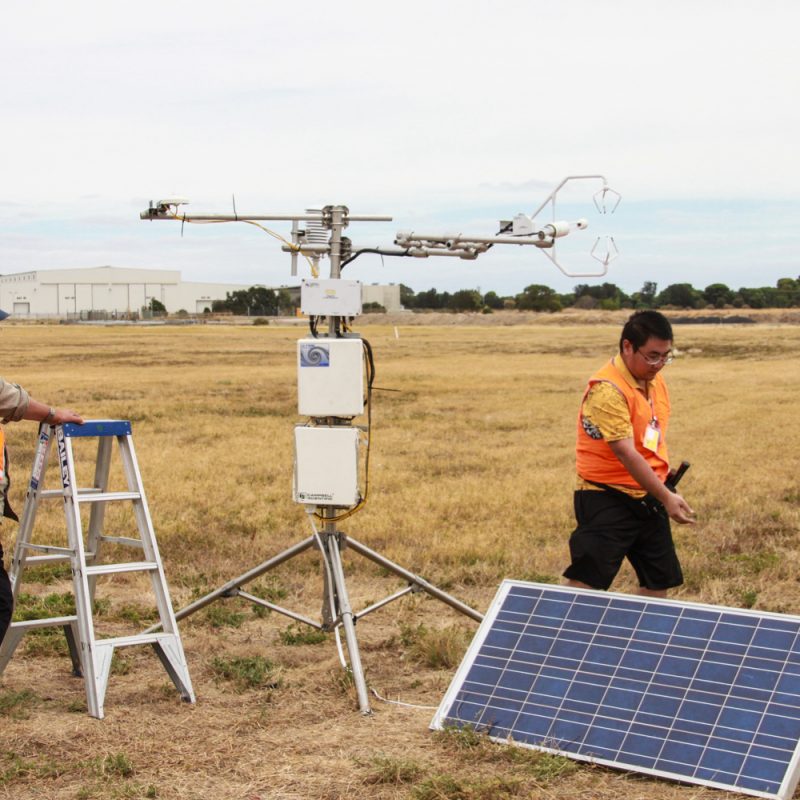
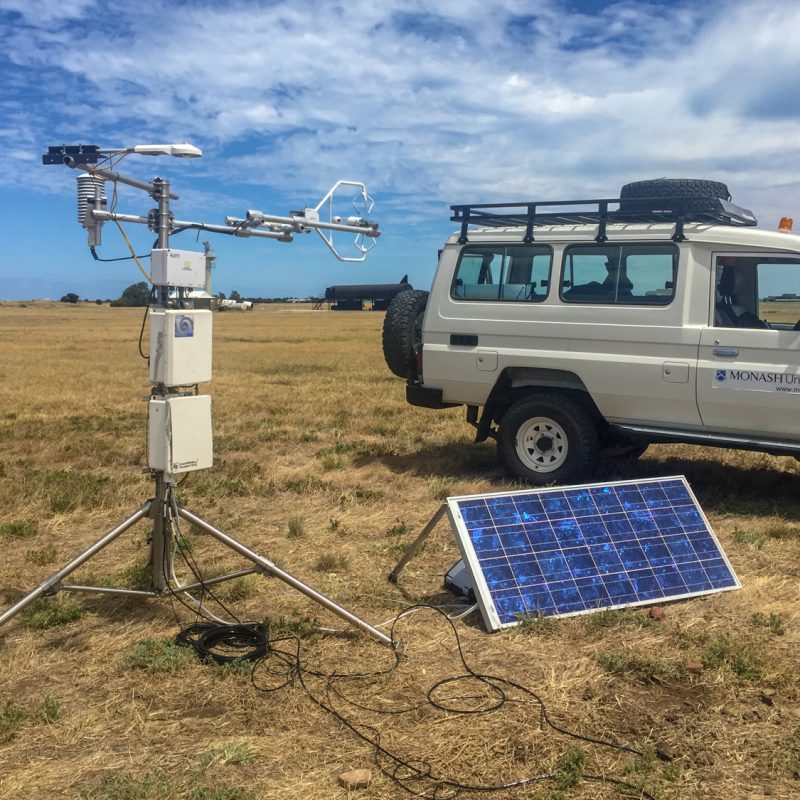
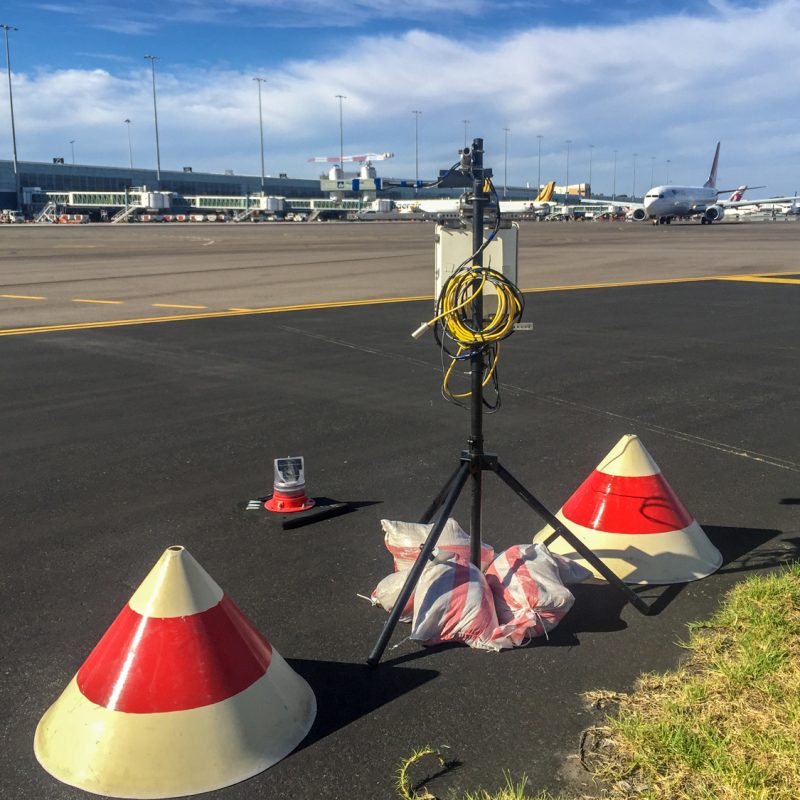
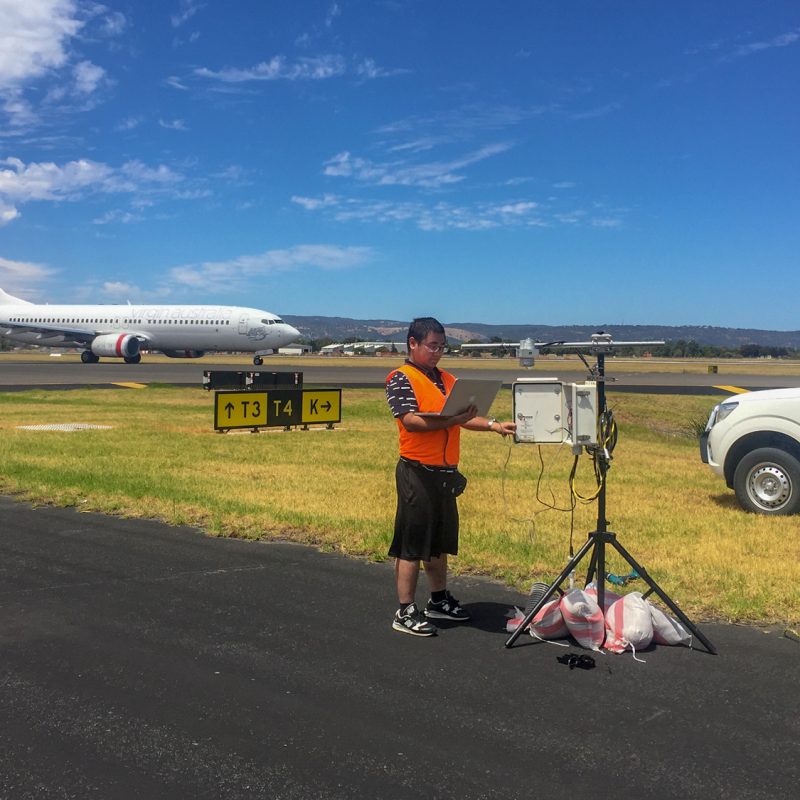
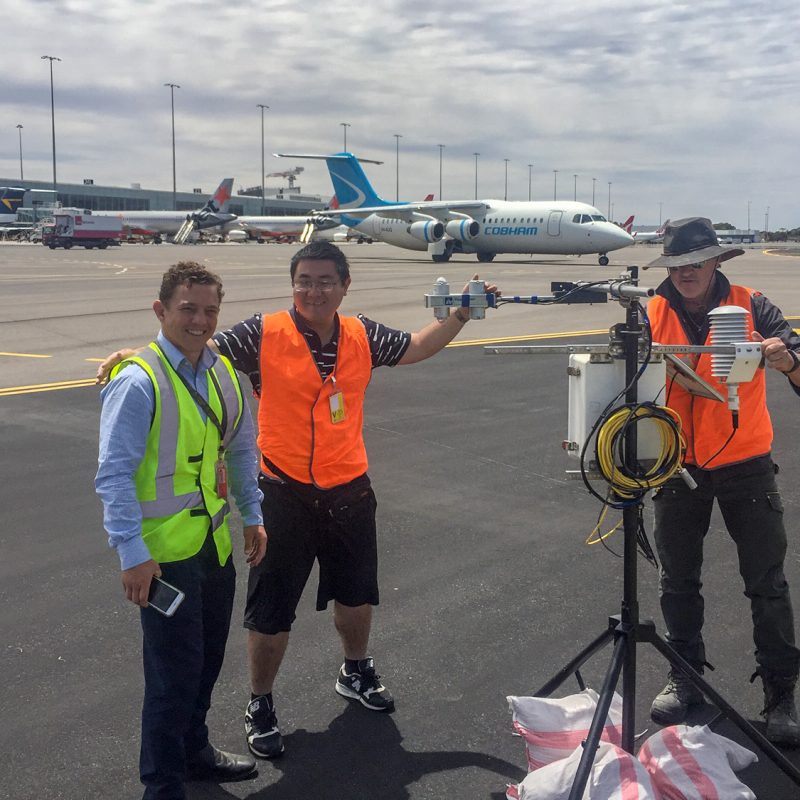
Comments